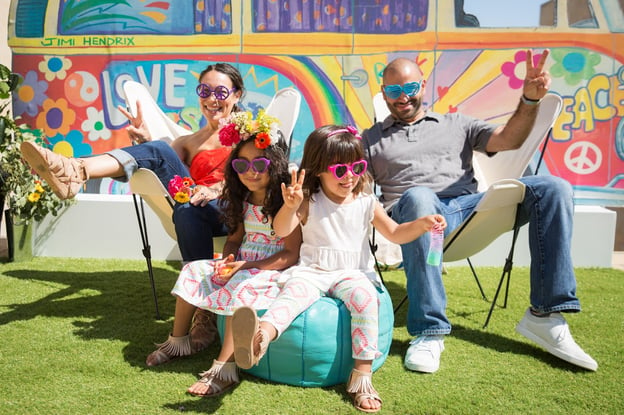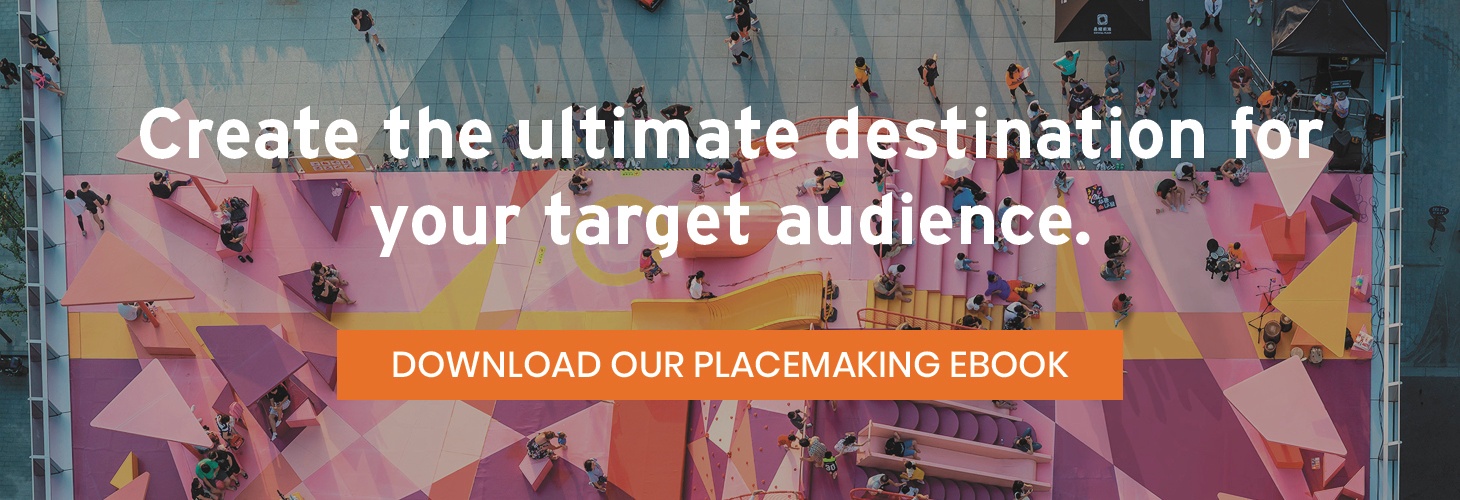Experiential Employee Engagement is a Must Have in 2021

Retention Strategy Event, LinkedIn
In the midst of what has been deemed the “Turnover Tsunami” of 2021, companies around the world are taking a thorough look at their retention efforts through the lens of experiential employee engagement. With 52% of the workforce admitting that they are looking for a new job this year (up 35% from the year prior) and 46% of those respondents noting that this decision comes in large part due to feeling less connected to their company, it is becoming increasingly clear that when employee engagement suffers, entire companies suffer as well.
Increased turnover rates are also, notably, a response to the swell of stress and burnout that many employees felt during 2020. Employee burnout is nothing new, but it took on a whole new meaning last year when many modern workers found themselves unable to escape the ongoing uncertainty of the COVID-19 pandemic while transitioning to working from home.
Take a look at new data from Indeed, highlighting how individual groups are feeling and giving a pulse check on groups you may work with or lead.
- 53% of Millennials were already burned out pre-pandemic, and they remain the most affected population, with 59% experiencing it today.
- Gen-Z burnout has grown to almost being tied with Millennials, with 58% reporting burnout — up from 47%.
- Baby Boomers show a 7% increase in burnout from pre-pandemic levels (24%) to today (31%).
- 54% of Gen-Xers are currently burned out — a 14% jump from the 40% who felt this way before.
- Overall, 80% believe Covid-19 has impacted workplace burnout and the majority of 67% say burnout has worsened during the pandemic.
So, how do companies bounce back from a tumultuous year unlike any before? The not-so-secret response to such high levels of employee turnover and burnout starts with really examining where you are lacking in engagement — ramp up your employee engagement efforts, and your workers can reconnect with your company culture.

Summer of Love Employee Picnic, Campari, Event Strategy & Production by DPEM
Experience is at the center of engagement.
Engagement is the key for employees to truly feel connected to your company, and experiences are what drive true community building and reinforce connections to each other and the overall mission and vision. This form of experiential employee engagement requires complete immersion in the company culture, embodying who the company is, and inviting employees to be a part of the company story so it becomes theirs.
On a baseline level, replacing employees is expensive and time-consuming. On average, it costs companies anywhere from 6 to 9 months of an employee’s salary to replace them. So if you have employees making an average of $60,000 a year, it could come between $30,000 and $45,000 in recruitment, training, and onboarding costs to replace them. Instead of resigning yourself to an endless loop of losing talented employees and recruiting their replacements, focus your efforts on keeping the employees you have invested and engaged in. Take an interest not only in their individual projects and responsibilities but in the culture of your company as a whole.
Company owners, leaders, and managers used to share the belief that employee engagement was simply a task that needed to be checked off the to-do list in order to move on to more important things. It was even viewed as a chore, something that needed to be acknowledged in order to keep all of the cogs in the organization’s machine happy enough to continue producing more high-quality work. Now, as we move into the more inclusive and hybrid future of work, employee engagement has evolved from an initiative begrudgingly approached by team leaders to becoming an expected and necessary component of company culture in which the employees are active participants, peers, collaborators, and motivators. The new age of experiential employee engagement views connects with the human quality of workers, as the demand for qualified labor grows and with it, employees are able to be more confident, more explorative, more expectant.
Interested in creating a unique opportunity for your employees, whether in-person, hybrid, or virtually? Check out our guide to finding the right format for your next employee engagement experience.
The Evolution of Employee Engagement
How did we get here? Of course, the COVID-19 pandemic and subsequent work from home migration was a driving force in ushering in a new wave of workplace policies and cultural shifts, but even before March 2020, trailblazers had already begun to set a benchmark that paved the way for the type of experiential employee engagement we are seeing now.
For example, a few ways that Google successfully engages their employees in experiential ways is through departmental competitions, club showcases, fun team building and large-scale networking events, public awards, hack days, and even international innovation days for youth, where their ideas and designs are reviewed for inspiration and creators encouraged to become potential employees.
In the same way that COVID-19 essentially broke and then reset old corporate culture standards to evolve alongside the changing needs of the modern employee, the rise of the dot.com experience years ago did the same thing. Before industry leaders like Google and Genentech, the accepted attitude was to show up to work, do a good job and get it done, and your reward is your paycheck. Once they started making the employee experience something worth coveting, they were able to take retaining and attracting major talent to a new level.
If we accept that corporate culture is human-made, then it can be human changed or unmade. In other words, we make a projected culture a norm through habit and then level up to it to determine whether it is valuable or not. Pre-COVID-19, the generally accepted take on remote work was that you could not have staff work from home and be as effective or efficient. However, what we learned over the past year is that it turns out people are still dedicated and often times even more self-motivated to get work done when working remotely. And with the removal of a commute, employees have opened themselves up to be even more available for work-related matters while still having more time each day for their personal life.
Ultimately, with each shake up we are reducing controlled management and liberating the individual contribution. By staying in-tune with our employee’s changing needs, desires, and workplace expectations we are valuing employees and encouraging them to discover their own potential. To today’s HR teams and employees, this shift means great freedom and investment.
This embrace of employee engagement initiatives goes beyond the expected perks and benefits. Real engagement is done through experiences that bring your mission statement and values to life, all the while continuously immersing your employees in your story. And the best part? They get to share in those experiences alongside their team to build community.

Holiday Party, Benefit Cosmetics, Event Strategy & Production by DPEM
Experiential Employee Engagement Tactics to Try
To incorporate an experiential factor in your employee engagement tactics, explore these strategies to keep teams motivated and connected with company culture.
- Invest in employees investing in themselves by creating a health and wellness program. Then, contribute to its success by encouraging participation, providing resources for it, and making it easy and fun for your employees.
- Stand for something your team can be proud of. A lot happened in 2020, and employees expect companies to keep up with social progression — such as creating experiences around good causes that give back to the community, championing and representing diversity, and making activations inclusive in every way. For example, we helped Airbnb celebrate a week of doing good for their community.
- If your team is remote or distributed across many different cities or countries, create virtual engagement that connects them to each other. Have employees send in videos and photos, and edit it into a short reel with motivational words from leadership. This is a great opportunity to get to know your fellow employees from other offices and other countries, while helping promote company culture. See how we did this for Blackline.
- Give them fun experiences they want to be a part of, where they can relax and enjoy their colleagues outside of the office. See how we’ve done that for Google and LinkedIn.
- Create a program that focuses on growing together, investing in employee growth, and their future at your company. The key to creating a successful engagement program is to include the employees in that conversation and vision to boost career development, ignite passion for learning, and inspire growth.
After a year that saw a more distanced workforce than ever before, where you engage in experiential employee engagement is just as important as how. To remind your teams of the foundation of your company culture and to reconnect them with your (and their) organization’s community, invest in office amenities and common spaces that invite people to gather and connect outside of their independent work, but within their work life. Check out how companies are creatively creating places people want to work - we love this space.
Placemaking is an effort to further connect your company within its environment. Not only does it attract new talent to your organization and improve staff productivity, when employees feel connected to their community they will form a deeper and more meaningful relationship with their work. To get started on incorporating placemaking into your employee engagement initiatives, here is the Guide to Placemaking: Reinventing Spaces Into Destinations For Specific Target Audiences.

